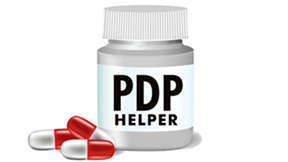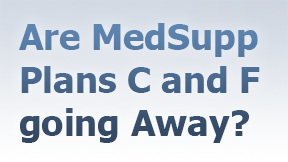 For several years we have published articles, book reviews, transcripts of YouTube videos and other articles all discussing this central theme: The over-consumption of sugar, high fructose corn syrup (HFCS), and refined carbohydrates leads to what’s called metabolic syndrome.
For several years we have published articles, book reviews, transcripts of YouTube videos and other articles all discussing this central theme: The over-consumption of sugar, high fructose corn syrup (HFCS), and refined carbohydrates leads to what’s called metabolic syndrome.
These refined carbohydrates elevate your blood sugar, which triggers your pancreas to secrete more insulin to bring down your elevated blood sugar levels. Eventually, your cells become more resistant to the effects of insulin, and your doctor then tells you that you have developed insulin resistance.
The doctor prescribes metformin to head off your incipient type 2 diabetes. Hypertension meds follow. Next, it’s statin drugs, Now, you’re being treated for full-fledged metabolic syndrome, and the door is now wide open to a panoply of degenerative illnesses. Among these are type 2 diabetes, obesity, hypertension, heart disease, strokes, kidney problems, vision diseases, cancer, and others.
Then the metformin doesn’t work as well as it used to, and your doctor now prescribes insulin. The costs go up, and you are hit with high copays. Things keep progressing downhill.
The above scenario can seriously compromise your immune system. We’re now seeing many reports that in addition to respiratory issues, type 2 diabetes, hypertension, obesity, and heart illness are co-morbidity factors aggravating one’s coronavirus illness. Put bluntly, you are more likely to die if you contract the COVID-19 virus.
What seems to be the trigger mechanism for these degenerative illnesses? From my readings and personal experience my answer is this: Sugar and HFCS. They may taste good, but they also tickle your dopamine receptors as well as being addictive.
To get a better understanding as to how sugar consumption compromises your immune system, here is an abbreviated transcript of the first ten minutes of Dr. Shiva’s YouTube video titled, This Event Was A Coordinated Last Ditch Effort By The [DS], Moves & Countermoves: Dr. Shiva.
Note: I recommend stopping at the 10:45 mark. After that point, Dr. Shiva starts going off on politics and conspiracy theories.
Dr. Shiva’s Presentation
3:40-4:14 He explains the parable of the six blind men and the king to illustrate the reductionist way of thinking.
4:21 Dr. Shiva explains in detail the reductionist way of thinking, and he uses the elephant in the room example.
4:30 People in power want to use science to hide the larger piece.
4:38 To look at this issue we need to look at the whole issue. The elephant in the room is the immune system.
4:43 Is the immune system so frail that a virus can destroy it? That’s the central question.
4:55 If you look at medical education, it’s built on the big pharma model.
5:10 With all the years of study, they really don’t understand the immune system. How does this all work?
5:40 The immune system is a very complex system. He expands in detail just how complex it is.
6:02 It’s much more complex than what was understood when the national vaccine act was passed in 1962.
6:20 He explains in more detail how the immune system works.
6:55 The body is fighting back against these pathogens and it resolves itself. It’s called resilience.
7:05 However, if people are not running on all six cylinders [assuming a 6 cylinder engine] and if a couple of them have been knocked out through bad eating, lots of high sugar diets [Ed: My emphasis] which creates candida, creates gleo-toxins which takes out your macrophages or T-cells; well guess what happens?
7:24 Your body in its infinite wisdom tries to self-protect itself. So, it will start using two of its cylinders, and they overreact. It’s the overreaction of a weakened and dysfunctional immune system.
7:38 It not only tries to attack the virus particle by trying to explode its cell wall and break it up. He further explains this process and references the Ebola virus.
8:06 In the case of the coronavirus, it goes to the epithelial cells in your lungs. It’s your over-reaction of your own body.
8:18 Why does that over-reaction occur? It could be genetic…. It could be that you have been eating garbage most of your life…you’ve compromised your immune system…
8:28 It could be your diabetes…
8:36 Or as you age… As you age, your thyroid function goes down. Why’s that an issue? When your thyroid function goes down, you don’t produce enough vitamin A
8:42 And guess what vitamin A is? It’s a hormone which builds a wall around your cells to protect any pathogens from coming in.
8:55 And on top of that, if you’re not getting enough vitamin D…vitamin D is an amazing nutrient… your body uses it to create a very powerful chemical called cathelicidin.
9:10 These are like bullets. These bullets poke holes in the walls of bacteria or in the walls of viruses, and it basically destroys them.
9:25 What you’re really looking at is that the immune system needs certain nutrients. When it has those nutrients your body functions beautifully. It takes care of itself. If you deplete yourself of these nutrients, your body become immuno-suppressed, or you have other types of diseases.
9:45 None of the people around the president are studying [this] at all. It’s vaccines, vaccines, vaccines… forgetting the immune system in most of is fine. We get viruses every day. We build anti-bodies every day, and we move forward.
10:00 We have millions? of viruses in our bodies right now.
10:05 He explains that the coronavirus is a variation of the SARS virus. It has a higher infectivity rate and a lower mortality rate. It is a virus, and our body knows how to deal with it.
10:06 However, if you have immune-compromised people like older people. He references Italy with an older population.
10:42 He then rhetorically asks, “Why are we shutting down the country for this phenomenon when we don’t shut the country down when 600,000 people die of heart disease?”
Mr. Comments: The takeaway here is that consuming sugar trashes your immune system. In addition to social distancing and staying at home, one of the very best things you can do for yourself is to eat healthily and avoid foods that trash your immune system
More Evidence of Co-morbidity Factors
HUGE! Infectious Disease Expert Says His Clinic Has Not Seen ANYONE UNDER 70 Who was not Obese or Pre-Diabetic Get Seriously Ill with COVID-19 (VIDEO) …The title to this article says it well.
Here is a key quote from Dr. Stephen Smith’s interview:
The more we see this disease, the more we understand that severe rapid COVID disease especially is in diabetics or prediabetics. We have 19 or 20 patients who are intubated. And 18 of the 20 are diabetic. And two are prediabetic. We don’t have anybody who’s been intubated in our group of over 80 now that was not diabetic or pre-diabetic that was intubated. We’ve seen younger patients with severe disease that have a very high BMI. We have patients that are over 300 pounds. We’ve seen a lot of it. And just now I think the world is catching up to this. A Seattle group published their data in the New England Journal of Medicine saying 58% of their ICU code patients were diabetic and that their average BMI was 33 which is morbidly obese. That fits with our data. What people haven’t focused on yet is that pre-diabetics are also at risk, especially if they have a high BMI. We haven’t had anyone under 70 who didn’t have a high BMI or was pre-diabetic get seriously ill. (Ed: I bolded key points.)
In the video, here a key quote from another contributing physician, Dr.Ramin Oskuoi:
Clearly those with diabetes and pre-diabetes are to a much, much higher risk…
My Comments. Please connect the dots. What are the primary causes of the type 2 diabetes and obesity that Dr. Smith references? Answer: It’s sugar, HFCS, and other refined carbohydrates.
Dr. Duc Vuong
Dr. Duc Vuong explains that type 2 diabetes, hypertension, and obesity are aggravating factors regarding the virus.
The following is an abbreviated transcript from Dr. Duc Vuong’s YouTube video, HOW COVID-19 KILLS–I’m a Surgeon–And Why We Can’t Save You.
Caution: Dr. Vuong uses some profanity is his video.
3:24 There is no immunity, which means what? Everybody who comes in contact with the virus will catch it and will have some sort of symptoms.
3:35 It can be mild…there might be some asymptomatic carriers…80% will have a mild case of corona virus.
3:40 Mild means you don’t need to be hospitalized. This is not the regular flu.
4:04 Twenty percent of the people will need to be hospitalized. Of those, about half will need to be in the ICU. Of those, about half will need to be on respirators.
4:20 Why am I talking about respirators? That has to do with how coronavirus kills.
4:33 Coronavirus is a respiratory illness. That’s important, because if anyone has a respiratory issue, he’s at a higher risk.
4:40 He names various respiratory issues…
4:50 You’re at risk guys….
4:54 There’s a direct correlation with coronavirus and bad outcomes…
4:58 If you have high blood pressure…that’s a bunch a Americans right there…I’ll explain why that’s important.
5:06 High blood pressure…it’s related. I promise you; it’s related.
5:11 Morbid obesity. That’s most of my following. If you lost the weight, you’re at normal risk. If your BMI is over 40, you’re at a higher risk.
5:25 Older age, but it’s coming down. We’re warning 60 year-olds.
5:44 He starts diagramming on his white board and explains how the virus illness progresses.
13:45 He references ACE inhibitors (for regulating blood pressure).
14:05 He demonstrates how the coronavirus targets the ACE protein. [Ed: it’s a little technical at this point.] ***
He describes how the lungs fill with fluid when infected by the virus.
24:00 The treatment [once the illnesses has seriously progressed] is to put you on a ventilator.
24:27 Half the time they’re put them on a ventilator, they don’t make it.
*** Dr. Vuong’s point is that taking ACE inhibitors seems to aggravate the lung illness caused by the COVID-19 virus. For further information, please consult this article from Science Daily: ACE inhibitors and angiotensin receptor blockers may increase the risk of severe COVID-19, paper suggests.
Some common ACE inhibitors are lisinopril, enalapril, fosinopril, quinapril, and ramipril.
Some common angiotensin receptor blockers are losartan, candesartan, telmisartan, and valsartan.
Warning: DO NOT MAKE ANY CHANGES WITH YOUR BLOOD PRESSURE OR ANY OTHER PRESCRIPTIONS ON YOUR OWN. PLEASE CONSULT YOUR MEDICAL PROFESSIONAL. THE INFORMATION PRESENTED IN THIS ARTICLE IS FOR EDUCATIONAL PURPOSES ONLY.
Obesity: Major COVID-19 Risk Factor
Finally, I read another article titled, Obesity Major COVID-19 Risk Factor, Says French Chief Epidemiologist.
The opening paragraph:
Being overweight is a major risk for people infected with the new coronavirus and the United States is particularly vulnerable because of high obesity levels there, France’s chief epidemiologist said on Wednesday.
Conclusion and Takeaways
There appears to be overwhelming evidence that obesity, hypertension, type 2 diabetes, and heart illness are co-morbidity factors for those that have contracted the COVID-19 illness. These situations are a result of metabolic syndrome, which to a great extent is caused by consuming sugar, HFCS, and other refined carbohydrates. Additionally, these behaviors are avoidable if you so desire.
If this is you, here is what can you do NOW!
- Eliminate sugar, HFCS, and refined carbs from your diet. Yes, you can do this!
- Lose weight if overweight.
- Exercise more.
- Eat real foods, not processed garbage!
Your best defense to ward off nasty viruses and nefarious bugs is to maintain your immune system and overall health! End
 In anti-fraud effort, feds to probe how telemarketers get hands on seniors’ Medicare info
In anti-fraud effort, feds to probe how telemarketers get hands on seniors’ Medicare info For several years we have published articles, book reviews, transcripts of YouTube videos and other articles all discussing this central theme: The over-consumption of sugar, high fructose corn syrup (HFCS), and refined carbohydrates leads to what’s called metabolic syndrome.
For several years we have published articles, book reviews, transcripts of YouTube videos and other articles all discussing this central theme: The over-consumption of sugar, high fructose corn syrup (HFCS), and refined carbohydrates leads to what’s called metabolic syndrome. by Dr. Bruce Fife
by Dr. Bruce Fife

 It seems like not a year goes by without some major shakeup regarding either Medicare advantage or Medicare Part D Prescription (PDP) plans. This year we have changes on steroids.
It seems like not a year goes by without some major shakeup regarding either Medicare advantage or Medicare Part D Prescription (PDP) plans. This year we have changes on steroids. This 2019 AEP is our fourth year of using
This 2019 AEP is our fourth year of using  221 million prescriptions…
221 million prescriptions… Note: I thank Ron Iverson, president of NAMSMAP* for assembling this data. This information comes from the National Association of Insurance Commissioners. *National Association of Medicare Supplement and Medicare Advantage Producers. This article is a revision from one published earlier this year.
Note: I thank Ron Iverson, president of NAMSMAP* for assembling this data. This information comes from the National Association of Insurance Commissioners. *National Association of Medicare Supplement and Medicare Advantage Producers. This article is a revision from one published earlier this year.